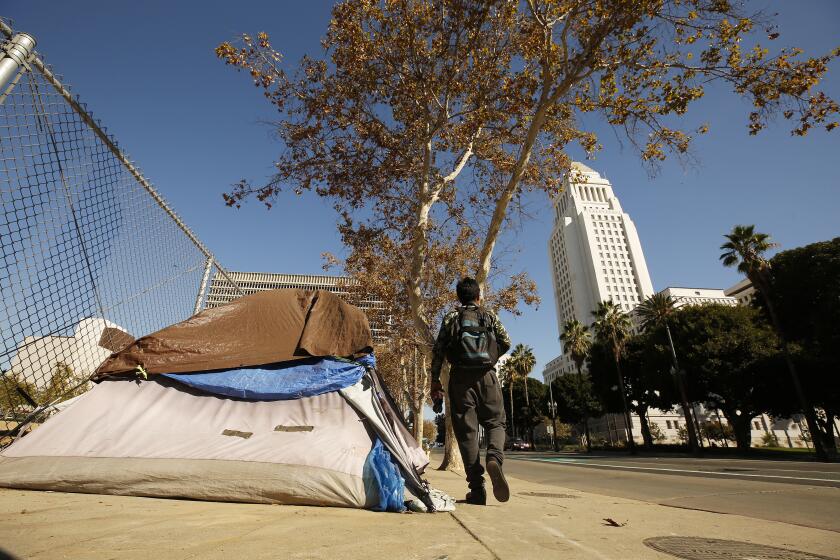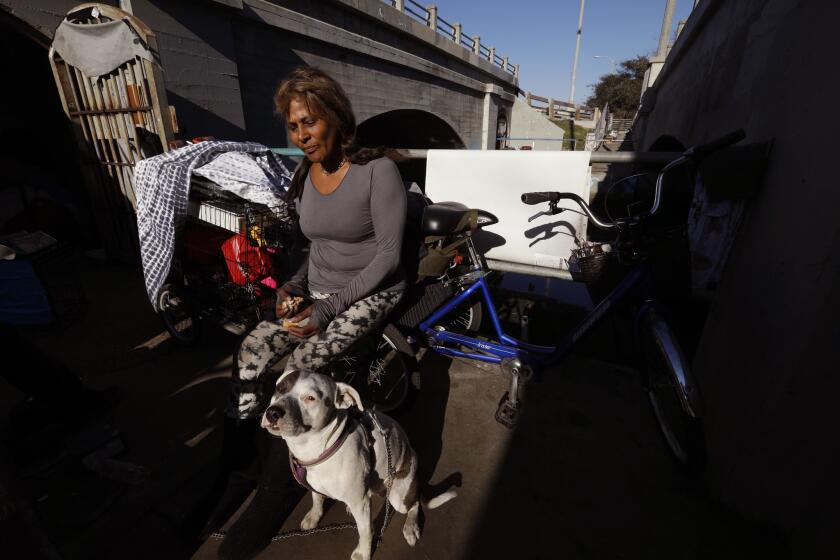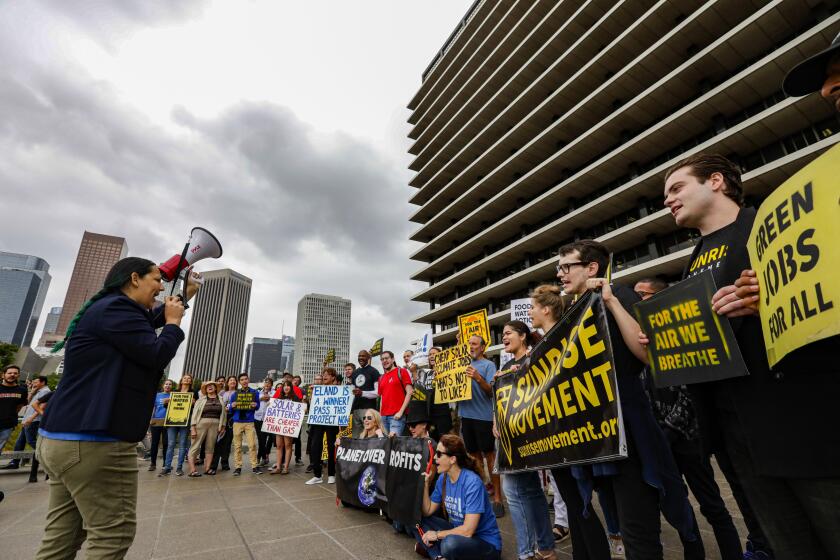DWP makes it expensive and time-consuming to build new housing. These new policies could help

- Share via
In a city infamous for business-squelching bureaucracy, no agency is more maligned than the Los Angeles Department of Water and Power. Developers who want to build housing, shopping centers or other commercial projects face steep costs and long delays in getting permits and connections to the city’s electric power system.
The DWP’s convoluted process can add so much time, money and uncertainty to a project that some businesses decide to build elsewhere, costing the city much-needed investment, particularly in housing.
-This month the DWP adopted the second of two policies aimed at making the utility more business friendly by cutting power infrastructure costs for individual housing and commercial projects. It’s a good start, but there’s a lot more work to do.
Los Angeles Mayor Karen Bass’ plan to call a state of emergency on homelessness could make a difference.
Of course, the DWP is not the only agency responsible for L.A.’s notorious red tape; the planning, public works and building and safety departments can all be choke points, particularly when it comes to getting new housing built. But the utility stands out as uniquely challenging.
Earlier this year, a study from the Los Angeles Business Council found that it takes almost four years to approve and build an apartment building in L.A. Underground power installation approval by the DWP was the second-most significant delay, taking about eight months for an apartment development. The biggest reason for delay is the need to get discretionary approvals from city departments and the Planning Commission.
The Board of Water and Power Commissioners and utility leaders have been meeting with architects and developers to figure out how to make the process faster and cheaper. That has resulted in two new policies.
Editorial: California cities want to stop fast-tracking affordable housing construction. Bad idea
To end homelessness, California must build more housing, especially affordable housing. SB 35 has helped speed up affordable developments. It should be continued and expanded.
The first, dubbed Project Powerhouse, is specifically aimed at homeless housing and 100% affordable housing developments that are part of Mayor Karen Bass’ executive order to fast-track approvals. By assigning staff to meet with the developers early about their power needs and prioritizing their projects at each step of the process, the DWP has been able to cut the time from first contact to power completion to an average of five months, compared with an average of 2.5 years for other projects.
In addition, the DWP will change the way it charges developers for electric infrastructure built in the public right of way. Traditionally, when a new apartment complex, office or other commercial project would trigger the need for more power to an area, the utility charged the developer the full cost of extending high-voltage power lines down the street. For an underground line, that would add an estimated $2.2 million to the cost of the first construction — while projects built after would pay nothing for the shared line. And the expense was often a late surprise after the project had gotten other city approvals. That’s neither a good nor fair policy.
Mayor Karen Bass wants to fast-track homeless housing. So why is the city slow-walking a project in Venice?
In response, some developers decided to build elsewhere or wait, hoping another project would go first and foot the bill. Electric vehicle charging companies, in particular, said the policy was a big disincentive to building new charging stations in L.A., undermining a key city goal of encouraging residents to switch to electric vehicles.
For affordable and homeless housing projects, the cost could be a major blow. Developers typically cobble together tax credits, grants and other funding upfront. An unexpected power line extension bill from the DWP can delay a project by months or years if the developers have to apply for more money — usually taxpayer funding — to cover the expense.
Under the new policy, commercial projects will now pay their share of the cost of the power line extension, with future projects billed for their share, spreading the cost more evenly among users. For example, a developer will now pay around $368,000 for the line extension, rather than the full $2.2 million.
The DWP has to modernize its rates to match the rapidly changing electricity market and facilitate the transition to cleaner, greener energy.
For affordable and homeless housing developments, the DWP will cover the projects’ share of line extensions in the public right of way, which is estimated at $20 million this year. That’s a worthwhile expense to make homeless housing available in months rather than years. Developers will still be responsible for paying for the connection from their building to the shared power line.
The changes are a recognition that L.A.’s public utility has been an obstacle to addressing the homelessness and affordable housing crisis, said Cynthia McClain Hill, president of the Board of Water and Power Commissioners. “We’re not the solution, but we can be a significant contributor.”
The goal, she said, is to learn from the Project Powerhouse experience and start fast-tracking approvals of all commercial projects by next spring. Los Angeles ultimately benefits when it’s easier to build homes and to allow economic development and job creation. The DWP should be an aid, not a barrier, to investment.
More to Read
A cure for the common opinion
Get thought-provoking perspectives with our weekly newsletter.
You may occasionally receive promotional content from the Los Angeles Times.













